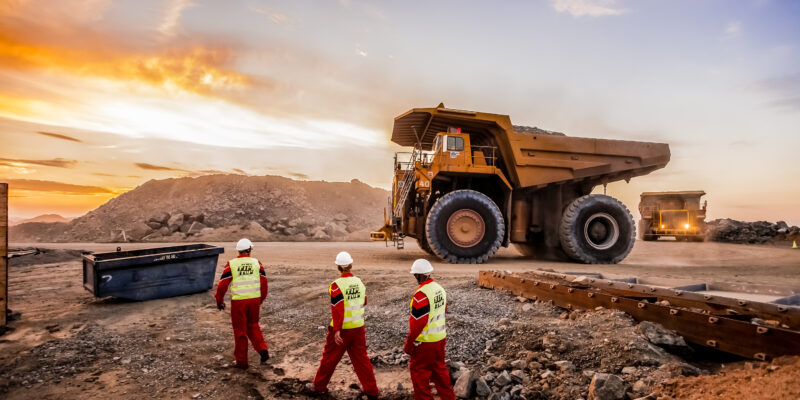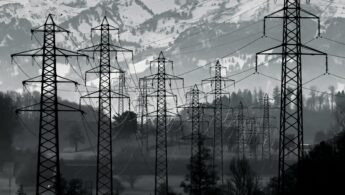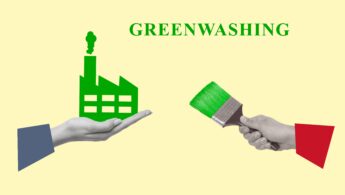Zero-carbon electricity: powering grids with wind and solar
Electricity grids are the backbone of global energy systems and are becoming increasingly important in the effort to limit global…

Africa hosts a significant share of global reserves and production of raw minerals. The continent has more than 50% of global reserves and production of cobalt and manganese, and more than 20% of aluminium and copper. For the 15 most mineral-rich countries in sub-Saharan Africa, mining accounts for 8% of government revenue. Revenues from copper and other battery metals extracted in Africa reached USD 20 billion in 2020 – about 13% of the global market. However, African minerals are currently largely exported in their raw states and refined abroad. China dominates the market, accounting for 85% of global processing capacity and 60% of worldwide production for critical minerals. Meanwhile, the Democratic Republic of Congo (DRC) refines about 7% of all copper products produced locally, and Zambia refines 1.3%.
Since minerals such as copper and cobalt are key to manufacturing renewable energy technologies, rising demand for these minerals presents an opportunity for Africa to play a key role in the global transition to renewable energy, and to change its position in global value chains. Many African countries currently operate in the upstream segment, extracting minerals and exporting raw materials without substantial value addition (Box 1). This perpetuates the continent’s position at the lower rungs of global value chains, constraining economic benefits and its ability to negotiate favourable trade terms. By engaging in processes that add value to mineral resources and increasing processing capacity within Africa, countries could export intermediate goods or final products and shift their positions in value chains to the midstream or downstream segments. This could create jobs in the processing sector as well as result in higher tax revenues and increased income from exports. According to McKinsey, Africa could generate between USD 200 million and USD 2 billion of additional annual revenue by 2030 and create up to 3.8 million jobs by building a competitive, low-carbon manufacturing sector. Additionally, minerals could play a role in meeting African citizens’ huge housing and transport needs by driving the sustainable development of these sectors.
A value chain is a series of activities that add value at each stage of producing and delivering a product to the market. The value chain for minerals consists of five stages:

The factors that make a mineral important, or critical, change over time and vary by country. These can include the availability of a mineral within a country, how concentrated it is in the ground, the relationship of the country to trade partners who could sell it, whether it can be substituted by another mineral, as well as global economic importance and national demand drivers.
As the world moves away from fossil fuels, rising demand for minerals used to produce renewable energy technologies holds the potential to lift some of Africa’s poorest people out of poverty. According to the International Energy Agency (IEA), over the next two decades, renewable energy technologies could account for 40% of total demand for copper and rare earth elements, between 60-70% of total nickel and cobalt demand, and almost 90% of lithium demand.[1]Assuming the Paris Agreement goals are met. This is a major opportunity for Africa, which hosts 30% of the world’s green mineral reserves. Table 1 shows the minerals required for different renewable energy technologies, where they are available in Africa and the continent’s share of global reserves.

China controls the manufacturing of renewable energy technologies and plays a key role in the processing of green minerals exported from the African continent.

Between 2005 and 2015, Chinese investment in the African mining industry grew 25 times. China’s control over mines in Africa has also been growing, reaching almost 7% of the total value of mines in 2018 in countries like Gabon, Ghana, South Africa, Zambia and Zimbabwe. Chinese firms control almost 41% of cobalt extraction in the DRC and nearly 28% of copper in the DRC and Zambia.
African countries have huge energy, housing and transport needs and minerals could provide the basis for developing these sectors in a sustainable way. In Africa, 120 million people do not have access to electricity, and 200 million people need modern, clean cooking solutions at home. “Africa needs to connect 90 million people annually to electricity in the next eight years and shift 130 million people from dirty cooking fuels every year” to ensure access to affordable, reliable, sustainable and modern energy for all citizens, according to the IEA.[2]Based on the United Nations’ sustainable development goals.
The expansion of renewables could help meet these energy needs, with demand for solar and wind power on the continent set to rise in the coming years. Fossil fuels constituted over 75% of Africa’s energy mix in 2020, with wind and solar accounting for about 3% in total. However, prices for renewable energy in Africa are nearing price parity with fossil fuels. In light of these market dynamics, by 2030, solar power could represent between 23% and 38% of the total installed capacity on the continent (Figure 3). The production of solar panels requires silicon and cobalt. Wind energy could account for between 14% and 23% of installed capacity and is set to grow by 900% based on projects announced to date. Wind turbine production requires copper, zinc, nickel, manganese and chromium, while offshore wind also requires rare earth elements. Hydroenergy accounts for 25% of current installed renewable capacity and requires platinum and zirconium.
An almost complete shift to renewable energy is feasible for the African continent by 2050 but would require increasing annual investments to between USD 40 billion-80 billion until 2030 and USD 80 billion-120 billion from 2030 to 2050. The lower estimate roughly corresponds to the nominal GDP of Uganda and the higher to the GDP of Côte d’Ivoire. Such a transition would result in many benefits: renewables emit considerably less greenhouse gas than fossil fuels, need fewer raw materials over their lifetime and could play a vital role in expanding electricity access in Africa. A case study in Kenya, Ethiopia and Rwanda also showed that off-grid solar systems had benefits for health, IT and micro-enterprises in rural areas.

The development of mineral value chains could also play a role in building infrastructure such as housing and transport. Although significant regional disparities exist, the average share of the urban population living in inadequate housing in Africa is almost 40%. Additionally, only 28% of the African population has convenient access to public transport. Africa is also the least motorised region in the world, accounting for only 1% of cars sold globally. Despite this, traditional fossil fuel-powered transport bears high costs: an analysis by Carbon Tracker shows that African countries currently spend USD 80 billion a year on transport fuels, equivalent to 2.5% of the continent’s GDP. Minerals such as copper which is used in the manufacturing of EVs or iron which is used in housing construction could play a role in developing these sectors.
Governments in Africa are already recognising the transformative potential of their mineral reserves by taking steps to develop the sector. Some African countries have started to restrict exports of minerals in their raw states to promote local processing, such as the DRC. Ghana has approved a policy to manage the production and extraction of lithium, which “demands that not a single volume of lithium produced in this country will be allowed to be exported in its raw state”, according to Lands and Natural Resources Minister Samuel Jinapor. However, to reap the benefits of such policies, countries will need to expand their processing capabilities to produce intermediate goods or final products of higher value.
African governments have also tried to increase the benefits of mining for local communities by introducing local content policies, for example by requiring mining companies to employ a certain level of local workers. However, miners sometimes decide to open up operations elsewhere when these requirements are too stringent or constantly changing. Pan-African cooperation could prevent a potential ‘race to the bottom’ where countries try to attract investors by offering the least stringent requirements. Table 2 shows efforts by different African countries to develop their green mineral industries.

While the growth in demand for green minerals presents a huge opportunity for Africa, more work is needed to develop the continent’s mineral value chains. The sector needs more regional cooperation, improved geological mapping, the development of a skilled workforce and higher levels of investment.
Establishing all segments of a mineral supply chain within a single country is often not feasible due to a lack of economies of scale.[5]Economies of scale refer to the cost advantages that an industry can achieve by increasing the scale of production, leading to lower average costs per unit. For this reason, regional cooperation is key to achieving value addition of minerals in Africa. Some progress has been made, with The African Green Minerals Strategy, to be launched in 2024, advocating for upstream value addition, expanding technical expertise, common external tariffs and tackling Africa’s energy deficit. It builds on previous agreements such as the Africa Mining Vision, a framework established by the African Union in 2009 for member nations to harness mining for equitable growth. Areas of focus included improving the quality of geological data, improving contract negotiation capacity, improving mineral sector governance, better management of mineral wealth, tackling infrastructure constraints and elevating small-scale mining. However, the implementation of the vision was criticised for being too slow and not including civil society actors.
The Africa Continental Free Trade Agreement, signed by 54 countries, also entered into force in 2021 and aims to increase economic integration, value addition and export diversification on the continent. The deal is projected to increase exports by 29%, including in green minerals and the manufacturing sector. Ghana, Kenya, Rwanda, Tanzania, Egypt, Mauritius, Cameroon and Tunisia have already started trading under the agreement. Despite this progress, intra-Africa trade currently accounts for less than 17% of the continent’s total trade, lower than Asia at 47% and Latin America at 27%. Further collaboration between African countries could “facilitate the emergence of regional value chains, attract investments, and increase the competitiveness of African countries in the mining sector,” according to The African Ministerial Conference on the Environment.
Africa’s mineral resources remain under-explored and its total exploration budget has fallen since 2012, when the continent accounted for 18% of the global exploration budget. In 2022, Africa accounted for about 10% of global exploration spending. According to the IEA, improving surveys and mapping is the first major step to attracting investors as they can reduce geological risks such as landslides that would impede mining. However, transparency concerns can arise when mining companies carry out mapping instead of the government, as well as the risk of environmental damage. Competitive bidding, which has already been introduced in the DRC, Guinea, Sierra Leone, Nigeria and Zambia, could increase transparency, and governments could establish no-go environmental zones prior to mapping exercises to limit environmental damage. Progress has already been made: Kenya suspended the issuance of mining licences to conduct large-scale mapping of the country’s mineral deposits between 2019 and 2023.
Investment in Africa’s mining sector has been rising since 2020, with low production costs and an expanding workforce providing an attractive environment for mining operations. However, the continent’s share of global investment in minerals fell to 8% in 2023 from 15% in 2014. According to the IEA, increased investment hinges on improved geological surveys, robust governance, improved transport infrastructure and a strong focus on minimising the environmental and social impacts of mining operations. In 2018, West Africa received the largest share of mining investment on the continent, mainly in fossil fuels and gold rather than green minerals. Southern Africa followed, drawing investments primarily in gold, platinum, nickel and cobalt. Despite having some of the largest resources, Central Africa received the least investment, largely due to political instability and conflict which restrained exploration activities.

Regions with higher levels of foreign investment tend to have larger workforces, since employment is concentrated in regions with more skilled populations and better technological capabilities. The number of mining employees in Africa has shrunk since 2014, and direct employment accounts for between 1% and 4% of the formal workforce in countries with large mining sectors. Investment in education and skills development programs is key to developing minerals value chains. Governments could require mining companies to commit to up-skilling local residents, for instance through public-private partnerships.
To develop its mineral value chain, Africa must address environmental, geopolitical and trade challenges in its mining sector. Ambitious mining projects have previously failed due to high costs, inadequate infrastructure, skill deficits and governance issues. An example is the Brazilian miner Vale’s plan to extract iron ore from the Simandou mine in Guinea, which fell through amid allegations of bribery.
While some Sub-Saharan African countries have imposed royalties and corporation taxes on the mining sector, government revenue generated from mining in many resource-rich economies across the region remains limited. State revenue from taxing multinational enterprises is especially small, despite their large influence in the sector. This is because countries impose low tax rates on corporations with the aim of attracting investment, which has stoked regional competition to offer the lowest tax burden. Pan-African cooperation is key to prevent such tax dumping. In addition, the International Monetary Fund estimates that African countries are losing between USD 450 million and 730 million per year in corporate income tax on average from tax avoidance by multinational enterprises. Some countries have already taken steps to address tax vulnerabilities in the mining sector. South Africa and Nigeria have imposed restrictions on interest deductions, while Sierra Leone has stopped negotiating fiscal terms on a mine-by-mine basis.
Africa’s mining sector is burdened by logistics-related costs that are 250% higher than the global average. This is largely due to shortcomings in countries’ transport and energy networks, such as poor road conditions or an unreliable electricity grid. The mining sector is a major consumer of electricity, accounting for about 54% of consumption in the Central African Copper Belt.[6] The Central African Copper Belt is a geological zone rich in copper and cobalt, located between DRC and Zambia. Adding mineral processing activities could further strain supply to this sector. In order to make African countries competitive for mineral processing, significant investments need to be made in transport and energy networks. African governments could make mining licences conditional on company commitments that will benefit the local or national economy. In Guinea, the government required financing for a 670 km rail link from the iron ore deposits to the port to be included in any development agreement. The current government in Chile, the world’s second biggest lithium extractor, is seeking a bigger share of profits from mining to go towards funding schools and hospitals.
Long before the rise in demand for renewable energy technology, many mining projects have had negative social, economic and environmental impacts on local communities. The IEA has listed several issues plaguing Africa’s mining sector, including human rights violations such as child labour. In the southern DRC province of Lualaba, where mining of copper and cobalt has expanded in recent years, local communities have been displaced for large-scale industrial mining projects, according to Amnesty International. Miners also face big health and safety risks, especially in small‐scale mining operations, where regulatory standards are weak, and healthcare or compensation in the event of an accident are often non‐existent.
Effective governance and regulation of the mining sector are needed to minimise negative impacts and ensure that local communities benefit from minerals extraction. At the same time, reducing corruption and boosting transparency in mining has the potential to create economic growth for local communities. Some attempts have been made, with 24 African countries signing up to the Extractive Industries Transparency Initiative (EITI) – a global scheme promoting transparency and accountability in the mining sector through the mandatory publication of detailed government and company reports on activities and revenues. However, there are concerns that countries and companies which are EITI members often disclose information that is insufficient or lacking in detail.
The extraction and production of green minerals also generate a substantial amount of waste, potentially carrying harmful chemicals that pose risks to ecosystems and water sources. Implementing effective waste management practices, including safe disposal and the adoption of advanced treatment technologies, is crucial to limit pollution and safeguard the environment and human health.
References
| ↑1 | Assuming the Paris Agreement goals are met. |
|---|---|
| ↑2 | Based on the United Nations’ sustainable development goals. |
| ↑3 | 2020 is the average estimate of installed capacity used across the three scenarios. |
| ↑4 | Source: African Ministerial Conference on the Environment, Environmental aspects of critical minerals in Africa in the clean energy transition, 2023. |
| ↑5 | Economies of scale refer to the cost advantages that an industry can achieve by increasing the scale of production, leading to lower average costs per unit. |
| ↑6 | The Central African Copper Belt is a geological zone rich in copper and cobalt, located between DRC and Zambia. |

Electricity grids are the backbone of global energy systems and are becoming increasingly important in the effort to limit global…

Greenwashing can take various forms, such as false advertising or misleading labelling. This guide shows how to spot greenwashing in…